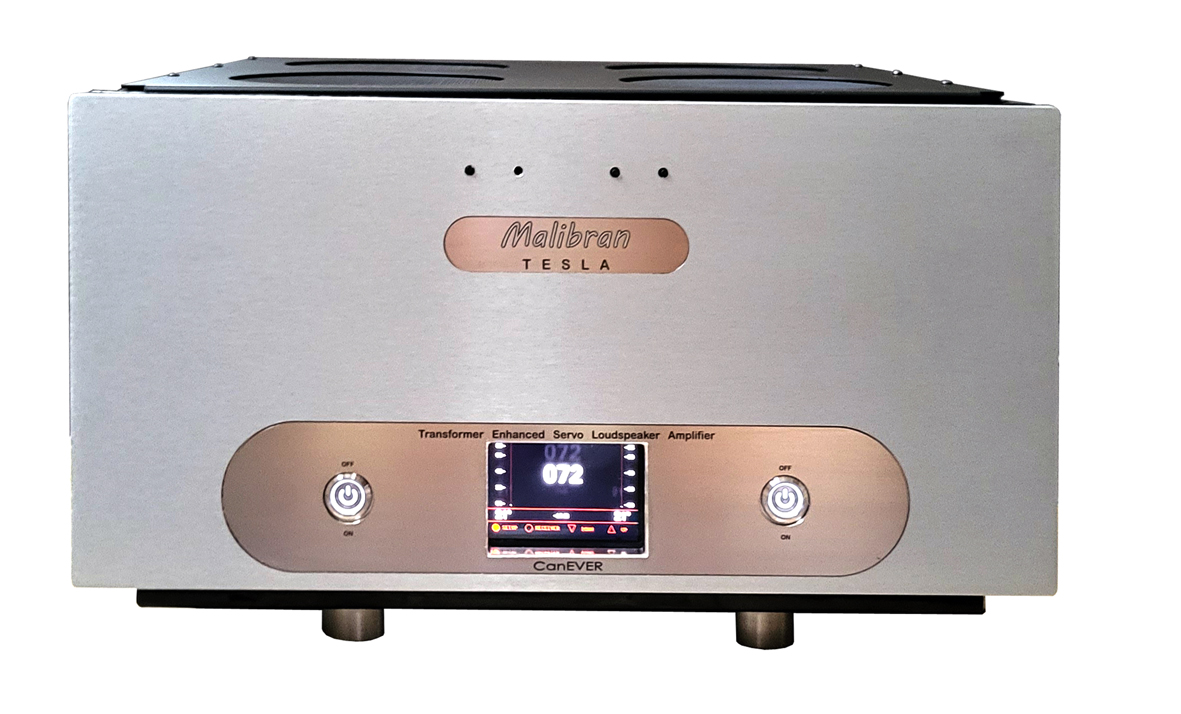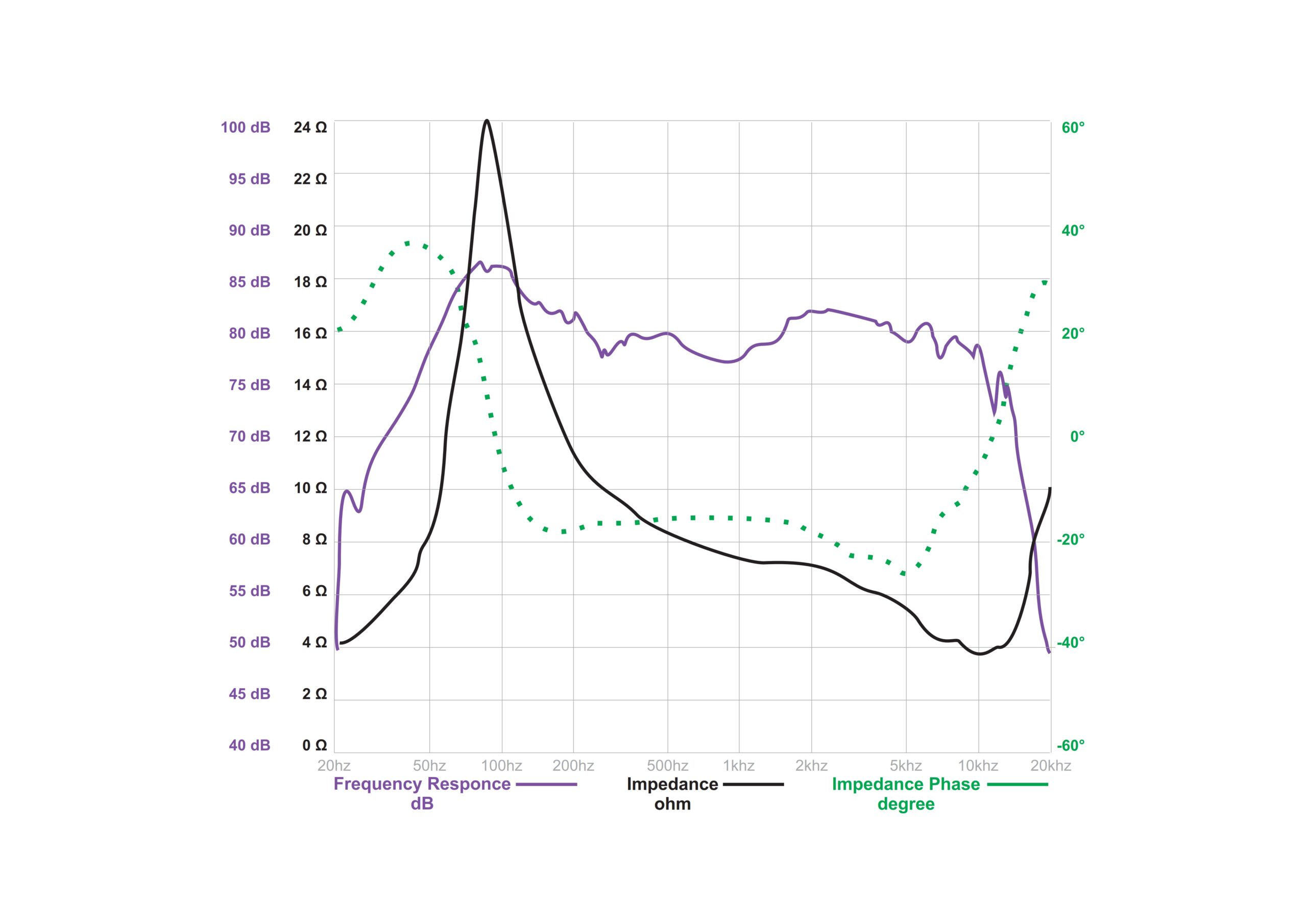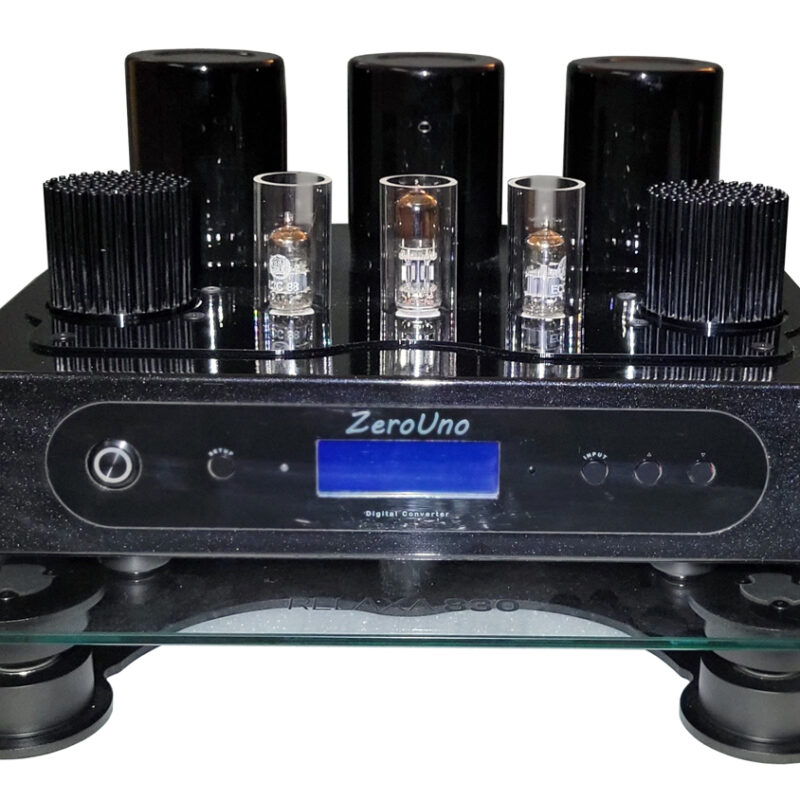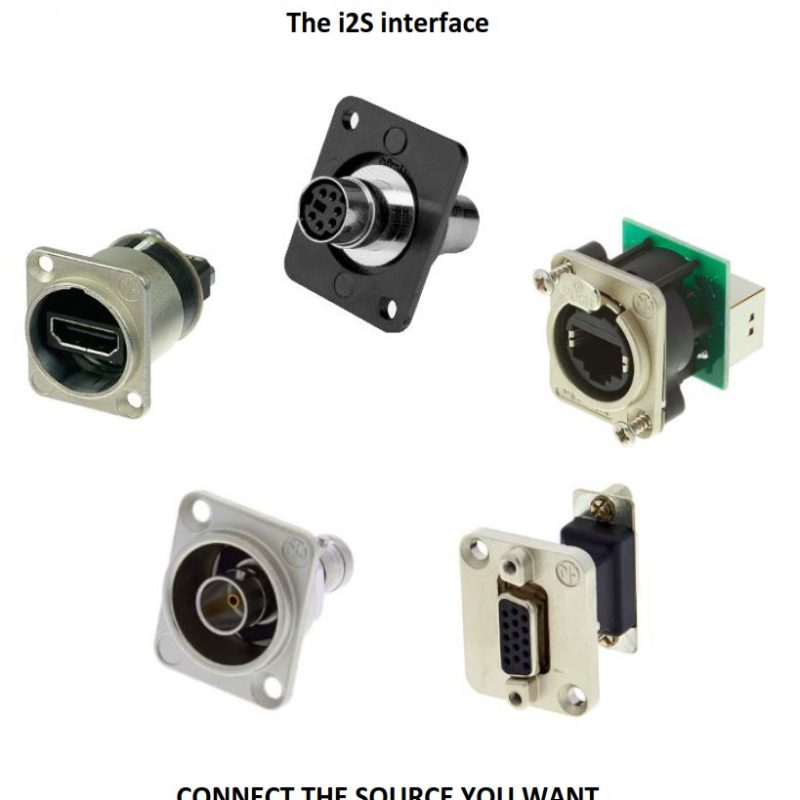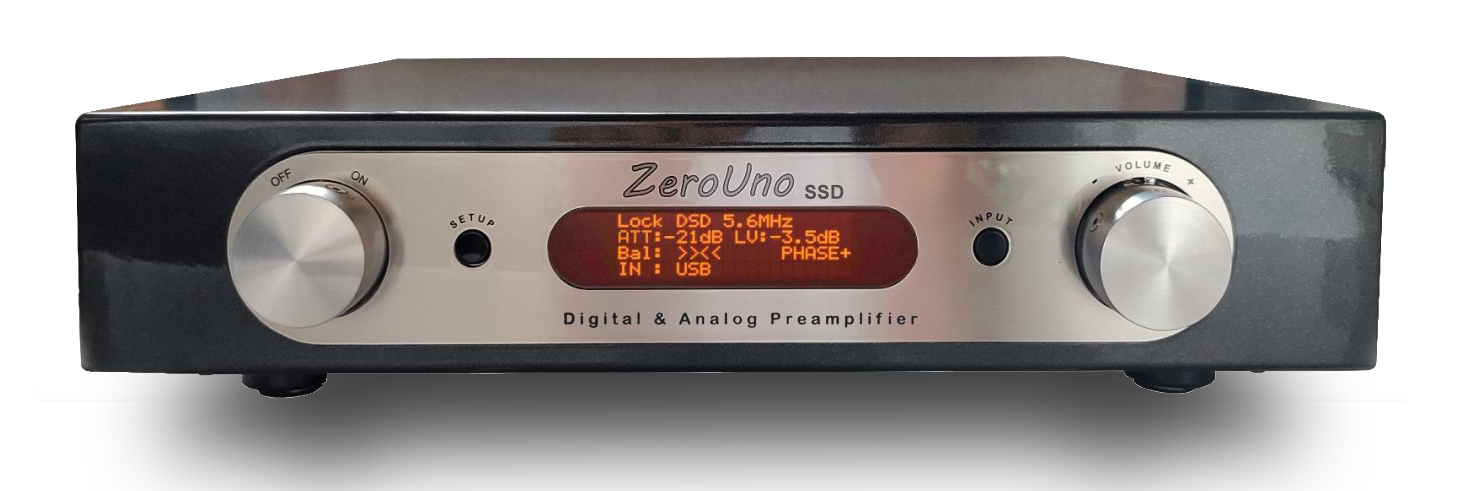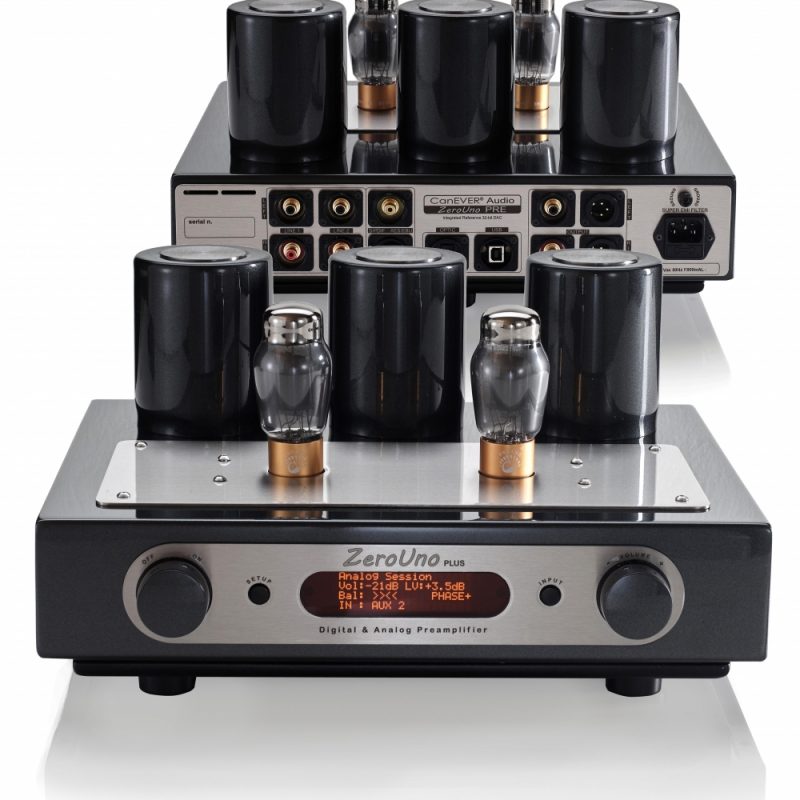Description
A crucial issue in the audio world is the impedance of a speaker that is just a reference value—it does not reflect the actual impedance across the full frequency range.
The Speaker Impedance Is Frequency-Dependent
- A speaker’s impedance is not fixed; it varies with frequency.
- Manufacturers declare a “nominal” impedance (4, 6, 8 ohms or whatever) for general reference.
- At low frequencies, especially near the woofer’s resonant frequency, the impedance often shows peaks that are 2–3 times, or more, higher than nominal (e.g., 8 ohms → 20–30 ohms).
- At mid and high frequencies, there may also be dips, sometimes below the nominal value.
- Passive crossover networks inside speakers can make the load even more unpredictable.
In the figure the impedance of a real loudspeaker; the nominal impedance is declared 8 ohms, but it exhibits a pick of 24ohms at 90Hz and a deep of 4ohms at 10KHz and after 10KHz rises to 10ohms and continue to rise.
Impact on Control and Dynamics
- When impedance peaks (especially in the bass), the speaker draws less power, potentially affecting output at those frequencies.
- This can lead to frequency response coloration or reduced control of the drivers, especially in the low end, where lots of current and a good damping factor are needed.
- If the amplifier has poor drive capability, it may struggle to maintain accurate control over the speaker’s movement.
The Malibran Amplifier approach
- At CanEVER AUDIO we designed the Malibran Amplifier with the automatic compensation of the impedance to have the best control and reach a natural detailed sound even at the very low frequencies (below 100Hz for example), with a strong power supply and stable under low-impedance loads.
- Speakers’ manufacturer usually provides the Bi-wiring connection using two separate cables—one for the low-frequency driver (woofer) and one for the high/mid-frequency driver (tweeter/midrange)—while still using the speaker’s internal passive crossover.
Leaving the existing amplifier for the tweeter/midrange and introducing the Malibran Power Amplifier for the woofer is easy to achieve:
- Reduced Interaction Between Frequency Bands
- Minimized interaction between low- and high-frequency signals within the speaker cable.
- Reduction of back-EMF (electromotive force) from the woofer that affects the tweeter’s signal.
- Better Use of Cable Characteristics
Benefits of the use of the Malibran Amplifier with the Bi-Amplification
- Improved Bass Control: By dedicating the Malibran solely to low frequencies, the system can deliver tighter and more controlled bass response.
- Enhanced Clarity in Mid and High Frequencies: Separating the amplification reduces intermodulation distortion, allowing for clearer and more detailed reproduction of vocals and instruments.
- Increased Dynamic Range: Each amplifier operates within a narrower frequency range, which can lead to better handling of dynamic peaks and overall improved system headroom.
